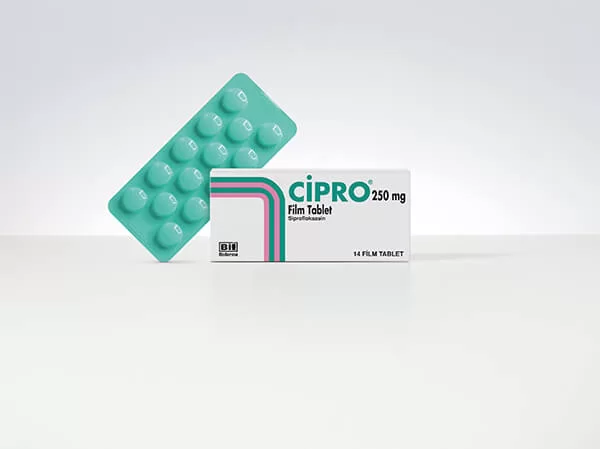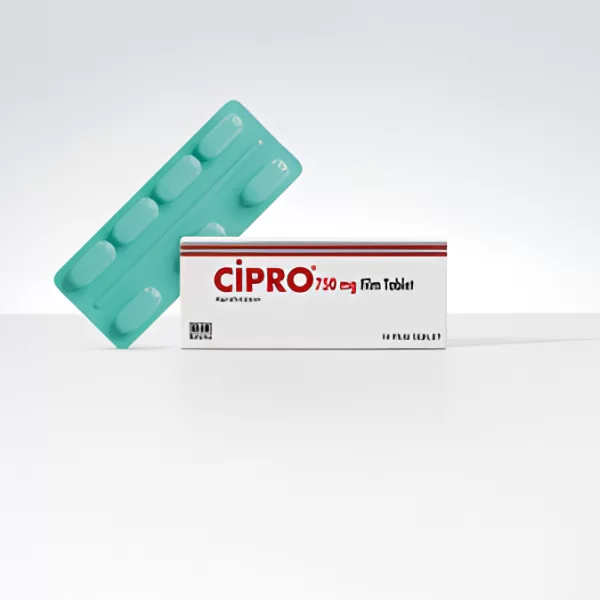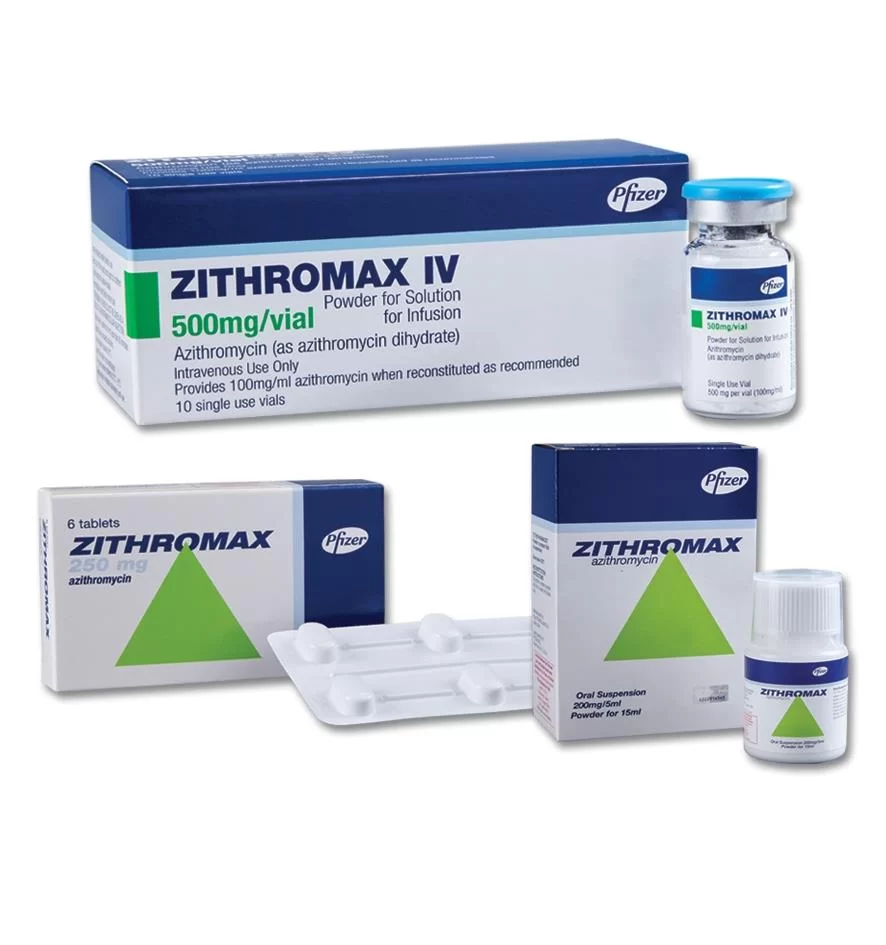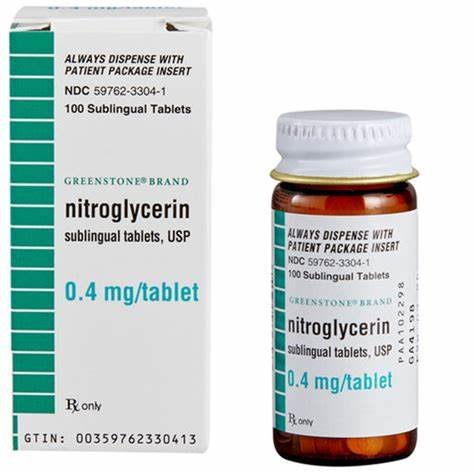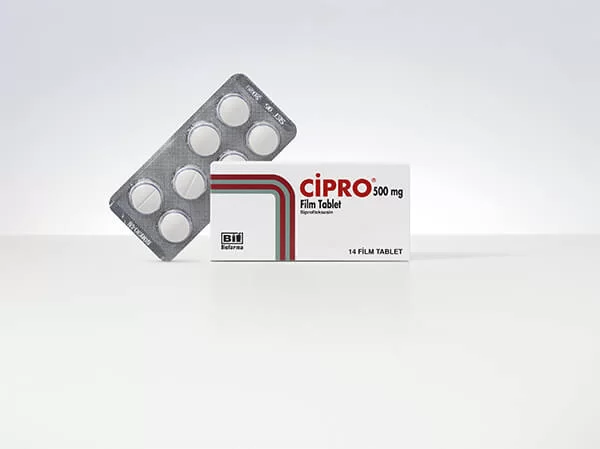
Cipro
Cipro - 1000mg
| Product | Per Pill | Savings | Per Pack | Order |
|---|---|---|---|---|
| 30 pills | $2.33 | $69.75 | Buy Now | |
| 60 pills | $1.63 | $41.85 | $139.50 $97.65 | Buy Now |
| 90 pills | $1.40 | $83.70 | $209.25 $125.55 | Buy Now |
| 120 pills | $1.28 | $125.55 | $279.00 $153.45 | Buy Now |
| 180 pills | $1.16 | $209.25 | $418.50 $209.25 | Buy Now |
| 270 pills | $1.09 | $334.80 | $627.75 $292.95 | Buy Now |
| 360 pills | $1.05 | $460.35 | $837.00 $376.65 | Buy Now |
Cipro - 750mg
| Product | Per Pill | Savings | Per Pack | Order |
|---|---|---|---|---|
| 30 pills | $1.98 | $59.40 | Buy Now | |
| 60 pills | $1.39 | $35.64 | $118.80 $83.16 | Buy Now |
| 90 pills | $1.19 | $71.28 | $178.20 $106.92 | Buy Now |
| 120 pills | $1.09 | $106.92 | $237.60 $130.68 | Buy Now |
| 180 pills | $0.99 | $178.20 | $356.40 $178.20 | Buy Now |
| 360 pills | $0.89 | $392.04 | $712.80 $320.76 | Buy Now |
Cipro - 500mg
| Product | Per Pill | Savings | Per Pack | Order |
|---|---|---|---|---|
| 60 pills | $0.71 | $42.75 | Buy Now | |
| 90 pills | $0.54 | $15.13 | $64.12 $48.99 | Buy Now |
| 120 pills | $0.46 | $30.27 | $85.50 $55.23 | Buy Now |
| 180 pills | $0.38 | $60.53 | $128.25 $67.72 | Buy Now |
| 270 pills | $0.32 | $105.93 | $192.37 $86.44 | Buy Now |
| 360 pills | $0.29 | $151.33 | $256.50 $105.17 | Buy Now |
Cipro - 250mg
Overview of Cipro
1. General Introduction
Cipro (ciprofloxacin) is a broad-spectrum antibiotic belonging to the fluoroquinolone class. It is used to treat a wide range of bacterial infections by inhibiting bacterial DNA gyrase and topoisomerase IV, which are essential for bacterial replication and repair. Cipro is effective against various types of bacteria, making it a versatile option for treating infections in different parts of the body.
2. Primary Purpose
The primary purpose of Cipro is to treat bacterial infections by stopping the growth and spread of bacteria. It is used to manage infections such as urinary tract infections (UTIs), respiratory tract infections, skin infections, gastrointestinal infections, and certain types of sexually transmitted infections.
3. Key Benefits and Properties
Cipro offers several key benefits and properties that make it an effective treatment option for bacterial infections:
- Broad-Spectrum Activity: Effective against a wide range of gram-positive and gram-negative bacteria.
- Rapid Onset of Action: Quickly inhibits bacterial growth and replication, leading to fast relief from symptoms.
- Versatile Use: Can be used to treat various types of infections, providing a flexible treatment option for healthcare providers.
4. Efficacy
Clinical studies have demonstrated the efficacy of Cipro in treating a variety of bacterial infections. Patients treated with Cipro typically experience rapid improvement in symptoms and successful eradication of the infection. The medication's broad-spectrum activity makes it a reliable choice for empirical therapy when the specific causative bacteria are not immediately known.
5. Safety and Tolerability
Cipro is generally well-tolerated by most patients, with a favorable safety profile. Common side effects include nausea, diarrhea, dizziness, headache, and abdominal pain. These side effects are usually mild and temporary. However, serious side effects can occur, such as tendonitis, tendon rupture, peripheral neuropathy, and central nervous system effects. Regular monitoring by a healthcare provider is recommended to ensure safety during treatment.
6. Convenience of Dosing
Cipro offers convenient dosing options, typically administered twice daily. The dosage varies based on the type and severity of the infection, as well as the patient's age and kidney function. This flexibility in dosing allows for personalized treatment plans that optimize efficacy and minimize side effects.
Indications for Use of Cipro
1. Conditions Treated by Cipro
Cipro (ciprofloxacin) is primarily indicated for the treatment of various bacterial infections, including:
- Urinary tract infections (UTIs)
- Respiratory tract infections, such as pneumonia and bronchitis
- Skin and soft tissue infections
- Gastrointestinal infections, including infectious diarrhea
- Bone and joint infections
- Certain types of sexually transmitted infections
- Intra-abdominal infections
- Anthrax (post-exposure prophylaxis and treatment)
2. Symptoms and Indications
- Urinary Tract Infections: Relieves symptoms such as frequent urination, burning sensation during urination, and abdominal pain.
- Respiratory Tract Infections: Alleviates symptoms like cough, chest pain, shortness of breath, and fever.
- Skin Infections: Reduces redness, swelling, pain, and discharge associated with bacterial skin infections.
- Gastrointestinal Infections: Eases symptoms such as diarrhea, abdominal cramps, and nausea.
Dosage and Administration of Cipro
1. Dosage and Intake
- Initial Dosage: The typical starting dose for Cipro varies based on the type and severity of the infection. For most infections, the recommended dose for adults is 250 mg to 750 mg every 12 hours.
- Maintenance Dosage: Depending on the patient’s response and the specific infection being treated, the dose may be adjusted. For example, severe or complicated infections may require higher doses.
2. Timing of Administration
- Regular Doses: Cipro should be taken twice daily, approximately 12 hours apart, to maintain consistent levels in the body. It can be taken with or without food.
- Missed Dose: If a dose is missed, it should be taken as soon as remembered unless it is close to the time for the next dose. In that case, skip the missed dose and resume the regular dosing schedule.
3. Additional Recommendations
- With or Without Food: Cipro can be taken with or without food, but it should be taken with a full glass of water.
- Avoid Calcium-Rich Foods and Antacids: These can interfere with the absorption of Cipro. It is recommended to avoid consuming dairy products, calcium-fortified juices, or antacids within two hours of taking the medication.
Mechanism of Action of Cipro
1. Description of Mechanism
Cipro works by inhibiting bacterial DNA gyrase and topoisomerase IV, enzymes crucial for bacterial DNA replication, transcription, repair, and recombination. This inhibition disrupts the DNA replication process, ultimately leading to bacterial cell death.
2. Biochemical Processes
- Inhibition of DNA Gyrase: Prevents the supercoiling of bacterial DNA, essential for replication and transcription.
- Inhibition of Topoisomerase IV: Interferes with the separation of replicated DNA, preventing bacterial cell division.
3. Physiological Effects
- Bacterial Cell Death: The disruption of DNA replication and cell division leads to the death of the bacterial cell, effectively treating the infection.
- Symptom Relief: Rapid bacterial eradication results in quick relief from infection symptoms.
Composition of Cipro
1. General Introduction
Cipro is composed of both active and inactive ingredients that work together to provide its therapeutic effects.
2. Active Ingredients
- Ciprofloxacin: The active component in Cipro, ciprofloxacin, is responsible for its antibacterial effects.
3. Inactive Ingredients
- Excipients: These may include substances such as microcrystalline cellulose, corn starch, magnesium stearate, colloidal silicon dioxide, and other agents that help form the tablet and ensure its stability and efficacy.
Side Effects of Cipro
1. General Introduction
While Cipro is generally well-tolerated, it can cause side effects in some patients. Awareness of these potential side effects helps in managing them effectively.
2. Possible Side Effects
- Common Side Effects: Nausea, diarrhea, dizziness, headache, and abdominal pain. These effects are usually mild and temporary.
- Less Common Side Effects: Some patients may experience rash, photosensitivity, or gastrointestinal disturbances.
3. Frequency and Severity
- Mild to Moderate: Most side effects are mild to moderate in severity and tend to diminish as the body adjusts to the medication.
- Severe: Rarely, severe side effects such as tendonitis, tendon rupture, peripheral neuropathy, and central nervous system effects may occur. Immediate medical attention is required in such cases.
Prevention of Side Effects
1. General Introduction
Preventing side effects involves following the prescribed dosage and usage guidelines carefully.
2. Tips to Prevent Side Effects
- Follow Dosage Instructions: Adhering to the prescribed dosage reduces the risk of side effects.
- Stay Hydrated: Drinking plenty of water can help prevent dehydration and reduce the risk of kidney-related side effects.
- Avoid Sun Exposure: Use sunscreen and wear protective clothing when outdoors to prevent photosensitivity reactions.
3. Recommendations for Improving Tolerance
- Gradual Adjustment: If side effects are bothersome, consult a healthcare provider for potential dose adjustment.
- Report Adverse Effects: Reporting any adverse effects to a healthcare provider ensures timely management and adjustment of the treatment plan.
Contraindications for Cipro
1. General Introduction
Certain conditions and factors may contraindicate the use of Cipro.
2. Conditions and Diseases
- Allergy to Ciprofloxacin: Cipro is contraindicated in patients with a known allergy to ciprofloxacin or other quinolones.
- Myasthenia Gravis: Cipro can exacerbate muscle weakness in patients with myasthenia gravis and should be avoided.
3. Warnings for Different Patient Groups
- Children and Adolescents: Cipro is generally not recommended for use in children and adolescents due to the risk of musculoskeletal disorders.
- Pregnant and Breastfeeding Women: Cipro should be used during pregnancy and breastfeeding only if the potential benefit justifies the potential risk to the fetus or infant.
Warnings and Precautions
1. General Introduction
Taking certain precautions can minimize risks associated with Cipro use.
2. Important Warnings
- Avoid Operating Machinery: Due to its potential side effects, patients should avoid driving or operating heavy machinery until they know how Cipro affects them.
- Monitor for Tendonitis and Tendon Rupture: Patients should be aware of the symptoms of tendonitis and tendon rupture and report any signs to their healthcare provider immediately.
3. Measures for Minimizing Risks
- Regular Monitoring: Regular follow-up visits with a healthcare provider to monitor progress and side effects.
- Communicate Concerns: Patients and caregivers should communicate any concerns or adverse effects to their healthcare provider promptly.
Missed Dose
1. What to Do if a Dose is Missed
If a dose of Cipro is missed, it should be taken as soon as remembered unless it is close to the time for the next dose. In that case, skip the missed dose and resume the regular dosing schedule.
2. Tips for Adhering to Dosing Schedule
- Set Reminders: Use alarms or reminders to remember to take the medication.
- Keep a Log: Maintain a log or chart to track dosing times.
Drug Interactions
1. Introduction
Cipro can interact with other medications, affecting its efficacy and safety.
2. Examples of Interactions
- Antacids and Supplements: Antacids and supplements containing calcium, magnesium, aluminum, or iron can reduce the absorption of Cipro.
- Theophylline: Concurrent use with theophylline can increase the risk of serious side effects.
- Warfarin: Cipro can enhance the effects of warfarin, increasing the risk of bleeding.
3. How to Avoid Negative Interactions
- Inform Healthcare Providers: Always inform healthcare providers about all medications being taken.
- Follow Guidelines: Adhere to medical guidelines and avoid unapproved combinations of medications.
Overdose
1. Symptoms of Overdose
Symptoms of a Cipro overdose can include dizziness, confusion, tremors, hallucinations, and gastrointestinal disturbances.
2. Actions to Take in Case of Overdose
- Seek Immediate Medical Attention: Contact emergency services or go to the nearest emergency room.
- Do Not Induce Vomiting: Unless instructed by a healthcare provider, do not attempt to induce vomiting.
Pharmacokinetics of Cipro
1. Absorption
Cipro is rapidly absorbed from the gastrointestinal tract, with peak plasma concentrations occurring within 1 to 2 hours after oral administration.
2. Distribution
Ciprofloxacin is widely distributed throughout the body, including tissues and fluids such as urine, bile, and lungs.
3. Metabolism
Cipro undergoes limited metabolism in the liver, with the majority of the dose excreted unchanged in the urine.
4. Elimination
The drug and its metabolites are excreted mainly in the urine. The elimination half-life of ciprofloxacin is approximately 4 to 5 hours.
Dosage Forms
1. Available Forms and Dosages
Cipro is available in various forms, including tablets, extended-release tablets, oral suspension, and intravenous solutions. Dosages typically range from 250 mg to 750 mg per unit.
2. Advantages of Dosage Forms
- Tablets and Oral Suspension: Convenient for routine use and easy to dose accurately.
- Extended-Release Tablets: Provide a longer duration of action, allowing for once-daily dosing.
- Intravenous Solutions: Useful in severe infections or when oral administration is not feasible.
Pregnancy and Breastfeeding
1. Safety of Use
The safety of Cipro during pregnancy and breastfeeding has not been fully established. It should be used during pregnancy only if the potential benefit justifies the potential risk to the fetus. Cipro is excreted in breast milk, so breastfeeding mothers should consult with a healthcare provider before use.
2. Recommendations for Pregnant and Nursing Mothers
- Consult Healthcare Provider: Always seek medical advice before starting or continuing Cipro during pregnancy or breastfeeding.
- Monitor Infant: If used during breastfeeding, monitor the infant for any adverse effects.
Storage Conditions
1. Storage Recommendations
Cipro should be stored at room temperature, away from light and moisture. Keep it out of reach of children and pets.
2. Temperature and Other Conditions
- Optimal Temperature: Store Cipro at a temperature between 20°C to 25°C (68°F to 77°F).
- Avoid Humidity: Keep the medication in a dry place to maintain its efficacy.
Clinical Trials and Efficacy
1. Overview of Clinical Studies
Clinical trials have demonstrated the efficacy of Cipro in treating a wide range of bacterial infections. These studies confirm its effectiveness in reducing infection symptoms and eradicating the causative bacteria.
2. Main Results and Findings
- Infection Control: Significant reduction in symptoms and successful eradication of bacterial infections.
- Broad-Spectrum Activity: Effective against various gram-positive and gram-negative bacteria.
Conclusion
1. Summary of Cipro
Cipro is a potent and versatile antibiotic for managing bacterial infections. Its benefits include broad-spectrum activity, rapid onset of action, and flexible dosing options. Cipro offers a valuable treatment option for patients with various types of bacterial infections.
2. Main Benefits and General Recommendations
- Benefits: Effective in treating a wide range of bacterial infections, well-tolerated, convenient dosing options.
- Recommendations: Follow prescribed dosages, monitor for side effects, and consult healthcare providers regularly for optimal management of bacterial infections.
